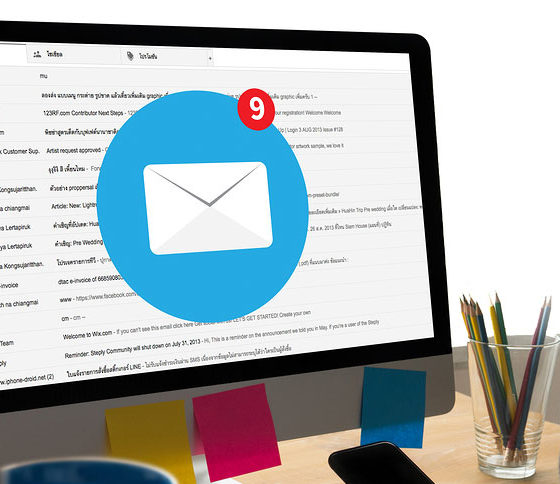In today’s hyperconnected world, businesses must go beyond traditional marketing to stay competitive. Investing in the right digital marketing services can significantly enhance visibility, attract high-quality leads, and drive consistent revenue growth. From search engine optimization to social media management, these services empower brands to reach audiences where they spend most of their time—online. Below, we explore the top eight digital marketing services that every business, regardless of size or industry, should leverage to maximize growth.
1. Search Engine Optimization (SEO)
Search Engine Optimization (SEO) is the foundation of a successful online presence. It ensures that your website ranks higher on search engines like Google, making it easier for potential customers to find you.
For example, a local real estate firm that optimizes its website using keyword-focused content and local listings will appear prominently when users search for “homes for sale near me.” This visibility directly translates to qualified leads and improved conversions.
Execution Steps:
- Conduct thorough keyword research to identify high-traffic, low-competition terms relevant to your business.
- Optimize website content, metadata, and images for those keywords.
- Build backlinks through guest posting, business directories, and influencer collaborations to strengthen domain authority.
2. Pay-Per-Click (PPC) Advertising
Pay-Per-Click advertising offers immediate visibility and measurable results. Through PPC services, businesses can target specific audiences with tailored ads across platforms like Google Ads, Bing, and social media.
For instance, an e-commerce brand might use Google Shopping ads to showcase products directly on search results pages, attracting users ready to buy. Unlike organic SEO, PPC delivers instant traffic and allows for precise control over budget and audience targeting.
Execution Steps:
- Define your campaign goals—whether it’s driving website traffic, generating leads, or increasing sales.
- Select the right ad platform based on your audience (Google, Meta, or LinkedIn).
- Continuously monitor performance metrics such as CTR, CPC, and ROI, adjusting bids and targeting to optimize results.
3. Content Marketing
Content marketing focuses on delivering valuable, relevant, and engaging content to your audience. It builds trust, establishes authority, and nurtures relationships that eventually convert into sales.
For example, a software company might publish blog posts, infographics, and whitepapers explaining how their solutions solve specific pain points. Over time, this approach drives organic traffic and strengthens customer loyalty.
Execution Steps:
- Develop a content calendar aligned with your audience’s interests and challenges.
- Diversify your content mix—blogs, videos, podcasts, and case studies.
- Promote content across multiple channels, including social media, newsletters, and industry forums.
4. Social Media Marketing
Social media marketing connects brands with audiences on platforms like Facebook, Instagram, TikTok, LinkedIn, and X (formerly Twitter). It’s one of the most effective ways to build brand awareness and foster engagement.
For example, a clothing retailer might use Instagram Stories to showcase new arrivals, while a B2B firm leverages LinkedIn posts to share thought leadership insights. Successful social media marketing blends creativity, consistency, and community engagement.
Execution Steps:
- Identify where your target audience spends their time online.
- Create platform-specific strategies—visual storytelling for Instagram, educational posts for LinkedIn, etc.
- Use analytics to track engagement, follower growth, and conversion metrics to refine future campaigns.
5. Email Marketing
Email marketing remains one of the most cost-effective digital strategies for customer retention and conversion. It enables businesses to deliver personalized messages directly to their audience’s inboxes.
For instance, an online store might send automated cart abandonment emails reminding customers to complete their purchases, while a service-based business might use newsletters to share updates and promotions.
Execution Steps:
- Segment your email list based on customer behavior, location, or purchase history.
- Craft personalized and mobile-friendly email templates with clear CTAs.
- Test different subject lines and send times to maximize open and click-through rates.
6. Conversion Rate Optimization (CRO)
Attracting traffic is only part of the equation—converting that traffic into paying customers is where CRO comes in. This strategy involves analyzing user behavior and optimizing website elements to increase conversions.
For example, an online booking platform may test different call-to-action buttons or simplify its checkout process to reduce drop-offs. Small tweaks, guided by data, can result in significant revenue growth.
Execution Steps:
- Use tools like Google Analytics or Hotjar to identify user behavior patterns.
- A/B test different headlines, layouts, and form designs.
- Implement changes gradually and measure the impact on conversion rates.
7. Influencer and Affiliate Marketing
Partnering with influencers and affiliates can expand your brand’s reach and credibility. These partnerships tap into established audiences and build trust faster than traditional ads.
For example, a fitness supplement brand might collaborate with fitness influencers who share authentic reviews on Instagram or YouTube. Similarly, affiliate partners can promote your products in exchange for a commission on each sale.
Execution Steps:
- Identify influencers or affiliates whose audiences align with your target demographic.
- Establish clear partnership terms, including compensation and campaign guidelines.
- Track performance through unique discount codes or affiliate tracking links.
8. Web Design and User Experience (UX) Optimization
A visually appealing and user-friendly website forms the backbone of all digital marketing efforts. Your website should be fast, mobile-responsive, and optimized for conversion.
For example, a professional service provider with a sleek, easy-to-navigate website is more likely to convert visitors into clients than one with slow load times or confusing navigation.
Execution Steps:
- Audit your website for speed, design consistency, and usability.
- Implement responsive design for optimal mobile and desktop performance.
- Ensure clear CTAs and intuitive navigation that guide users toward desired actions.
Final Thoughts
Investing in the right digital marketing services is no longer optional—it’s essential for sustainable business growth. From SEO and PPC advertising to social media and email campaigns, these services work together to create a cohesive and powerful digital presence. By leveraging these eight strategies strategically and continuously optimizing based on performance data, businesses can boost brand awareness, drive conversions, and achieve long-term success in the competitive digital landscape.









